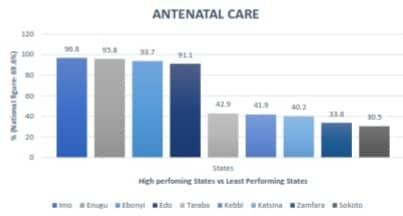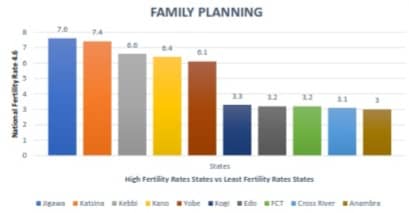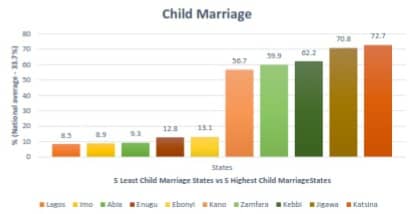By Hassan Zaggi
As expected, the recently released 6th Multiple Indicator Cluster Survey (MICS) report was greeted with complaints and criticisms.
Some reactions were harsh and in some quarters, the report was outrightly rejected, especially by state governments whose indices were not too good in some key areas.
Despite all these, however, the integrity and quality of the MICS report still stands tall, untainted and unblemished.
For the records, the MICS is a household survey developed by the United Nation Children’s Fund (UNICEF) with the aim of assisting countries in filling data gaps for monitoring human development indicators in general and in particular, the situation of children and women.
It has evolved over the years to respond to changing data needs, expanding from 28 indicators in the first round in 1999 to 200 in its current sixth edition.
In Nigeria, many relevant ministries and agencies of government including the Federal Ministry of Health, National Primary Healthcare Development Agency (NPHCDA), were deeply involved in the survey. The National Bureau of Statistics (NBS) was the chief lead of the process. In short, the survey was done by Nigeria through constitutionally established agencies.
However, UNICEF provides technical and financial support to ensure that the processes are strictly adhered to based on established international protocols and standards.
The MICS provides data on child mortality, health, nutrition, education, child and social protection, women’s health care and empowerment, water, sanitation and hygiene.
The MICS is meant to trigger development by exposing the areas/sectors that are not doing well for urgent amendment and also bringing to the fore the areas the government(s) is/are doing well so that it can be replicated in other states or countries.
The MICS report is a good source of peer review and learning by various stakeholders across the world.
It is therefore, not meant to shame, disgrace or even targeted at any government or state for embarrassment as the processes are based on global acceptable standards.
The recent reaction from Ogun state government on the survey report is, however, encouraging. The state seems to understand clearly that the survey is meant to improve the living standard of women, children and adults across the country.
While criticizing the MICS report for revealing Ogun State as having the highest infant mortality rate in the South-West of Nigeria, the Commissioner for Health, Dr. Olutomi Coker, said that the state government was aware of the health position of women and children in the state.
She, however, argued that the situation is not as painted by the MICS report. The Commissioner noted that the report made it clear that the sample size was not adequate for majority of indicators in the state thereby making the report a poor representation of the true picture of infant health in the state.
“Our attention has been drawn to a publication rating three southwest states as having high infant mortality as released in the last MICS disseminated recently in Ibadan. While the Ogun State Health Ministry acknowledges the result of the survey, we would like to state that we are monitoring the health situation of both our women and children in the state. All efforts are being deployed to ensure Ogun State continues to rank within one of the lowest in infant mortality in the southwest.
“The survey is conducted every two years and MICS 5 results for Ogun State was considerably low compared to the recent results which came as a surprise given the various interventions we have put in place as an administration to improve the health outcomes for our mothers and children,” the Commissioner stressed in the statement.
A cursory look at the MICS results revealed that Nigeria has made huge progress in some sectors. However, not in all states.
For example, child mortality decreased from 1 in 8 children dying before their 5th birthday (MICS 2016) to 1 in 10 children (MICS 2021). There has also been significant progress in exclusive breastfeeding and birth registration rates.
The exclusive breastfeeding rate increased from 24 per cent to 34 per cent, while nearly 60 per cent of Nigerian children are now registered at birth with civil authorities, compared to 47 per cent in 2016.
In addition, child marriage which has been a nightmare in most states in the north over the years, has reduced from 44 per cent to 30%.
Birth Registration

An attempt to spotlight some key indicators showed that, for example, in birth registration, Lagos and the Federal Capital Territory (FCT) performed extremely well with 94 and 87 per cent respectively; while, Sokoto and Jigawa were the least with 22.5% and 23.6% .
Under-5 Mortality

In under-5 mortality, while the national average is 102 per 100,000 live births, Sokoto (203), Kebbi (179), Katsina (159) and Zamfara (139) were among the highest. On the other hand, Ebonyi had the least with only 24 per 100,000 live births.
Antenatal Care with skilled caregivers

In Antenatal care with at least, one visit with skilled providers which has the national average of 69.6 per cent, Imo (96.8); Enugu (95.8), Ebonyi (93.7) and Edo (91.) had the highest.
On the other hand, the states with the least ANC attendance include Sokoto (30.5), Zamfara (33.8), Katsina (40.2) and Kebbi (41.9).
Family Planning

On Family Planning (FP), the MICS report has a national fertility rate of 4.6. On the other hand, Jigawa (7.6), Kastina (7.4), Kebbi (6.6), Kano (6.4), Yobe (6.1) and Sokoto (5.2) have the highest fertility rates.
The states with the least fertility rates, however, include Anambra (3.0), Cross River (3.1), Rivers (3.1), Lagos and FCT had (3.2) each.
Child Immunisation

In the area of the Child Immunisation (Zero Dose), the National Average is 18%. However, some states did extremely well. They include Ekiti (1), Enugu (1), Akwa Ibom (4), and Lagos (5). Those that did not perform well include Sokoto (51), Bauchi (35), Gombe (34), Borno (32) and Kano (30).
Child Marriage

The National Average for child marriage as revealed by the MICS is 33.7 per cent. The survey indicated that some states including Lagos (8.5), Imo (8.9), Abia (9.3) and Enugu (12.8) had the lowest. While states with the highest child marriage include Katsina (72.7), Jigawa (70.8), Kebbi (62.2) and Zamfara (59.9).
This is the stark reality before us as a nation. We must be sincere to ourselves. Even though there is some level of improvement, the truth is that most of our indices are not friendly.
What state governments need to do is to accept the reality, work hard and invest heavily in all sectors of their states so as to improve and strengthen the areas they did not do well.
Responding to questions from journalists at a recent media dialogue organised by the Child Rights Bureau unit of the Federal Ministry of Information in partnership with the United Nations Children Fund (UNICEF) in Port Harcourt, the UNICEF Chief of Measurement for Result (M4R), Claes Johanson, encouraged states that had deficiencies in one area or the other as exposed by the MICS to do more in order to close the gaps.
“These are numbers that come from the National Bureau of Statistics (NBS). UNICEF has provided some technical support, but truly Nigerians collected the data about Nigerians. All states were involved in the validation and the vetting of these data and so we believe that they are of the highest quality and they should go through them and learn what they (data) are telling because I think the data is of the highest quality.
“Kebbi state has success story in immunization, Sokoto state has success story in child marriage with a lot of improvement, Ekiti in terms of education and Enugu in terms of birth registration. So, we have a lot of success stories,” Johanson, said.
He further admonished that: “I think the entire NPHCDA and the states are extremely committed in immunization and we have seen it. We have seen a lot of successes among the states.
“Although in some states, we have not seen the progress that we want. What those states can do is to look at those results and see what they need to change.
“The commitment is there, they need to adjust and learn from the success story of other states.”



